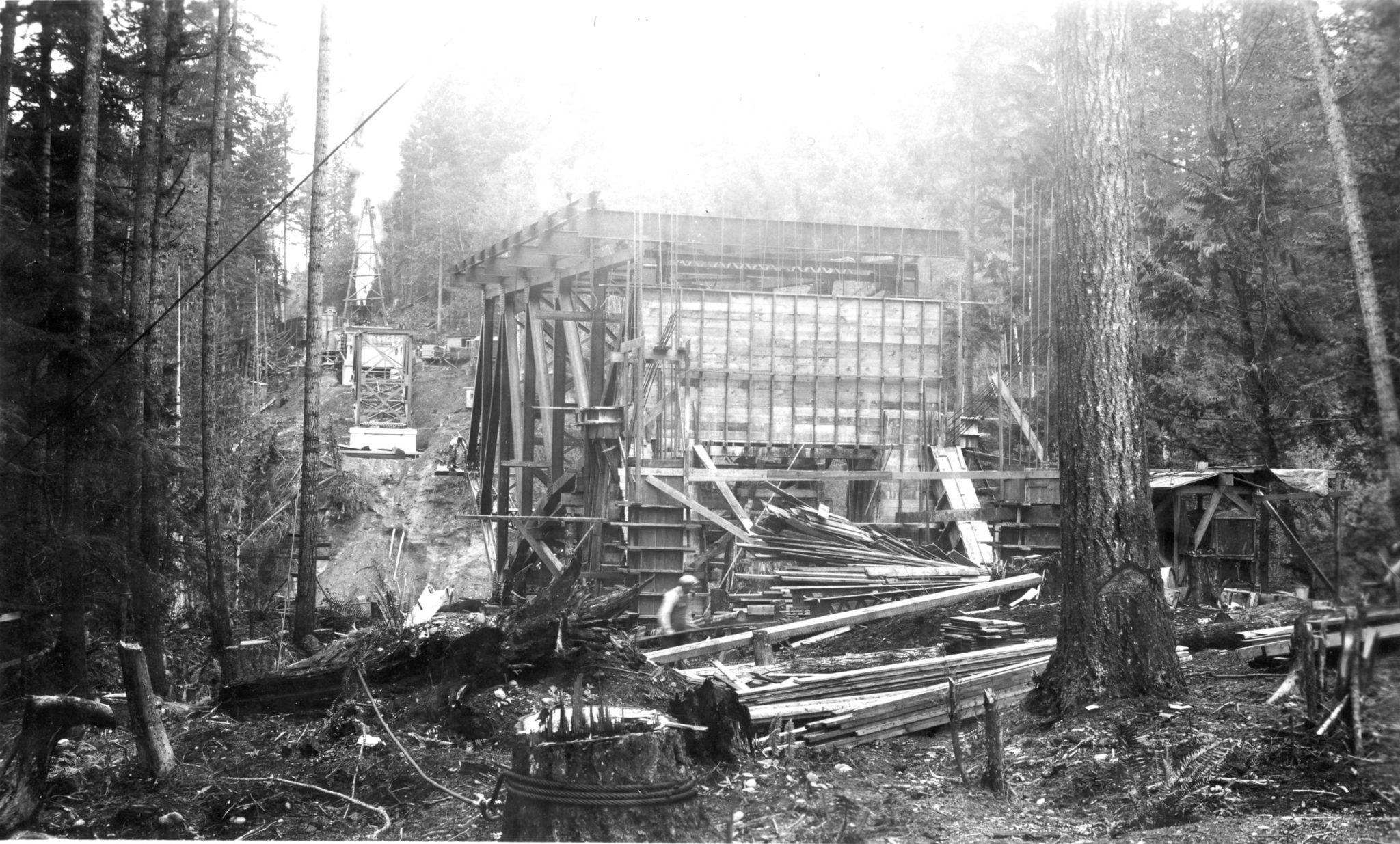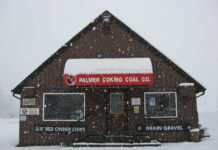This is the third of six columns explaining how the Highway 169 Bridge crossing the Green River was built over a 16-month period between June 1932 and October 1933. Officially known as the Dan Evans––Green River Bridge, it’s colloquially known as the Kummer Bridge. This view from Nov. 7, 1932 looks north from the Enumclaw side towards Black Diamond.
The tree to the right was a spar pole supporting thick steel cables strung over the river. They cables connected to a triangular tower on the other side. Behind that tower a plume of steam rises from a steam engine which powered a hoist. The hoist was used like a giant fishing reel to pull cables carrying heavy loads of steel beams, each one methodically set in place during the building process. The steel beam was assembled into a series of triangular trusses used to span the 700-foot canyon. The beams likely weighed one to two tons each.
The initial truss framework was built outward extended from each side. The work was precise as the two extending sections needed to precisely match when joined in the middle. The engineering and survey work to account for the weights and strengths of cantilevered beams and trusses was critical to ensure success of the completed design.
All the photos in the collection were taken by Thomas Blum, a licensed surveyor who also served as King County’s bridge inspector from 1924-1934. Blum’s family owned a 40-acre property one mile southeast of the bridge which 20 years later was developed into the Blum clay mine. The Kummer name came from George Kummer, a ceramist and engineer who was part of the early mining of clay about 1/2 mile downstream from the bridge. Next week’s photo will demonstrate the remarkable progress achieved over another month’s time.







